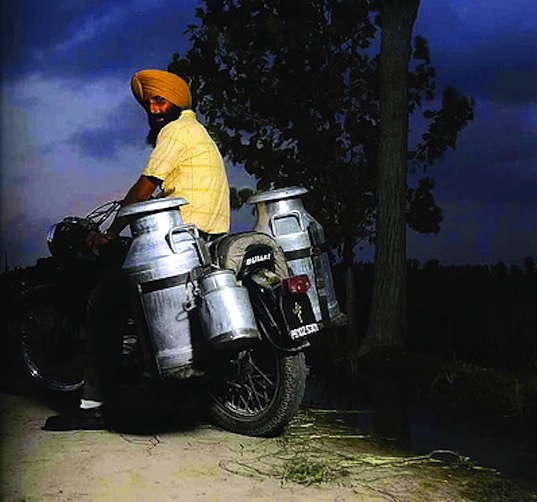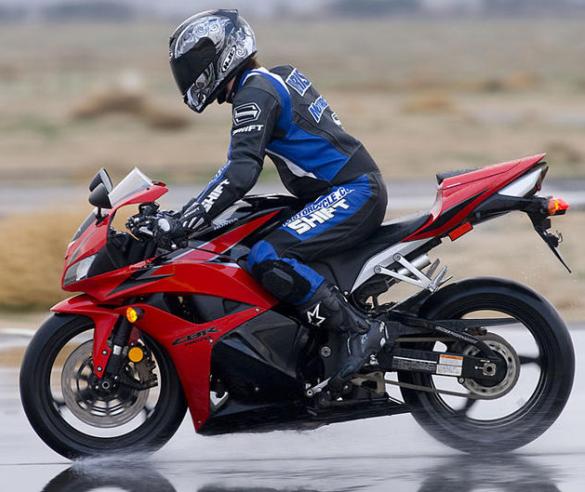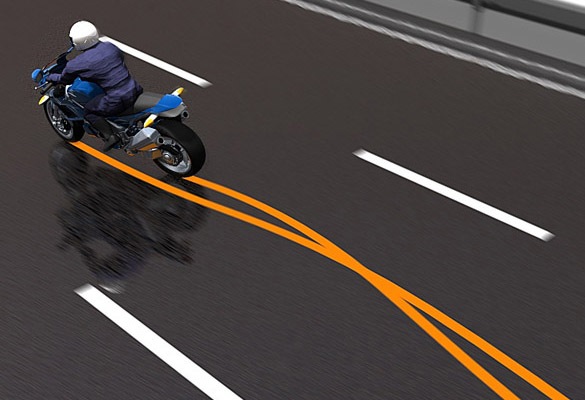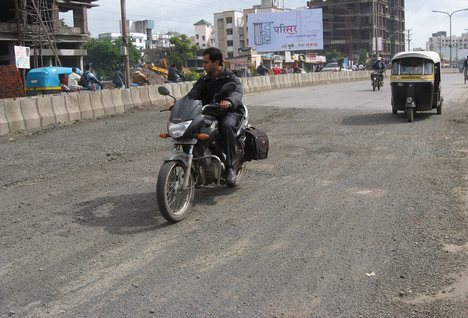There are many publication/sources which will give you “expert advice” on how to properly brake on a motorcycle. Most of which are copied gyan either from other sites or from sports bike riding guides.
So what you get to read is good advice but relevant only on perfect roads/tarmac/track (in developed countries)and not really practical when it comes to braking on our “desi” roads.
The experience posted below has been accumulated by yours truly after years of riding, skidding and even painfully falling on our Indian roads.
So what you get to read is good advice but relevant only on perfect roads/tarmac/track (in developed countries)and not really practical when it comes to braking on our “desi” roads.
The experience posted below has been accumulated by yours truly after years of riding, skidding and even painfully falling on our Indian roads.

I was told not to touch the front brake (when I was young)...
The first advice that I got when I was learning to ride a bicycle and also when I was learning to ride my dad’s Bajaj scooter was “Never touch the front brake, always brake using the rear brake”.
I was told back then that using the front brake is dangerous. So I never used to touch the front brakes of my bicycle or my dad’s scooter. In fact if I remember correctly, the front brake on our old scooter was always disconnected..!! I also believe that many Indians do not use the front brakes while riding two wheelers.
... but now I have the habit of using the Front brake more
The first advice that I got while riding a motorcycle from my younger brother (yep, my younger brother introduced me to motorcycles) was to use the front brake more for braking. This was the gyan that he had read from auto magazines which is correct but more apt for flawless roads/race tracks.

Later I realized (painfully) that this "copy+paste" gyan does not work perfectly for our less than perfect Indian roads.
Using ONLY the Rear brake is unsafe
The practice of using only the rear brake to stop a two wheeler is actually unsafe. When we brake on a two wheeler, the weight of the bike is transferred to the front of the bike (isn’t the rider and the pillion is thrown to the front?). If only the rear brake is engaged, the rear wheel can lose grip. The result could be a slide.
Using ONLY the Rear brake is unsafe
The practice of using only the rear brake to stop a two wheeler is actually unsafe. When we brake on a two wheeler, the weight of the bike is transferred to the front of the bike (isn’t the rider and the pillion is thrown to the front?). If only the rear brake is engaged, the rear wheel can lose grip. The result could be a slide.

On my bicycle or my dad’s scooter probably it was not an issue since my riding speed used to be quite low. But after a couple of scary rear wheel slides on my brand new CBZ (in 1999), I was convinced that using only the rear brake is not totally safe.
Using the Front brake too much can sometimes be dangerous on our Indian roads
I have had two instances of falling from a motorcycle because of using the Front brake more than the rear brake. And both times it was not because I had squeezed the front brakes too hard nor was it because I was at high speed. I was in fact riding only at 20-30 kmph when I had those spills.
Both times it was because the surface on which I braked was loose, the first time it was a patch of sand on tarmac and the second was a broken patch of gravelly surface. I had just touched the front brakes and due to the loose surface, the front wheel had got locked.
Using the Front brake too much can sometimes be dangerous on our Indian roads
I have had two instances of falling from a motorcycle because of using the Front brake more than the rear brake. And both times it was not because I had squeezed the front brakes too hard nor was it because I was at high speed. I was in fact riding only at 20-30 kmph when I had those spills.
Both times it was because the surface on which I braked was loose, the first time it was a patch of sand on tarmac and the second was a broken patch of gravelly surface. I had just touched the front brakes and due to the loose surface, the front wheel had got locked.

The two spills made me realize that there was some wisdom when I was told not to touch the front brake when I was learning to ride a bicycle.
Reason: "A rear wheel lock results in a slide which is scary but can be controlled, but a front wheel lock in most cases results in a fall.
One gets virtually no time to recover from a front wheel lock."
Reason: "A rear wheel lock results in a slide which is scary but can be controlled, but a front wheel lock in most cases results in a fall.
One gets virtually no time to recover from a front wheel lock."
So what’s the correct way to brake on our desi roads?
Its better to engage the rear brake first to slightly cut down the speed and then apply the front brake progressively.
This incidentally also also happens to be a sports bike braking technique.. this should also minimize the chances of a front wheel lock in case of loose surface.
Some Simple Golden rules:
Its better to engage the rear brake first to slightly cut down the speed and then apply the front brake progressively.
This incidentally also also happens to be a sports bike braking technique.. this should also minimize the chances of a front wheel lock in case of loose surface.
Some Simple Golden rules:
- [1] Use both brakes while braking
[2] Use the rear brake more while riding on a broken patch/bad road
[3] Practice normal braking/panic braking.. practice, practice
About the role of clutch during braking:
For braking on public roads, ideally it's better NOT to depress the clutch lever during braking, this lets what we call as "Engine Braking" take place which slows down the vehicle and also lets the rider remain in control of the bike.
Engine braking + Application of both brakes is the best way one can stop a vehicle most effectively. Depress the clutch lever just before the bike comes to a complete stop to prevent the engine from stalling.
This manner of braking of using "Engine Braking" + Application of brakes and then again depressing the clutch lever just before the bike stops, needs some practice. Personally I am still trying to get over my habit of depressing the clutch lever during Panic braking.
For braking on public roads, ideally it's better NOT to depress the clutch lever during braking, this lets what we call as "Engine Braking" take place which slows down the vehicle and also lets the rider remain in control of the bike.
Engine braking + Application of both brakes is the best way one can stop a vehicle most effectively. Depress the clutch lever just before the bike comes to a complete stop to prevent the engine from stalling.
This manner of braking of using "Engine Braking" + Application of brakes and then again depressing the clutch lever just before the bike stops, needs some practice. Personally I am still trying to get over my habit of depressing the clutch lever during Panic braking.
0 comments:
Post a Comment